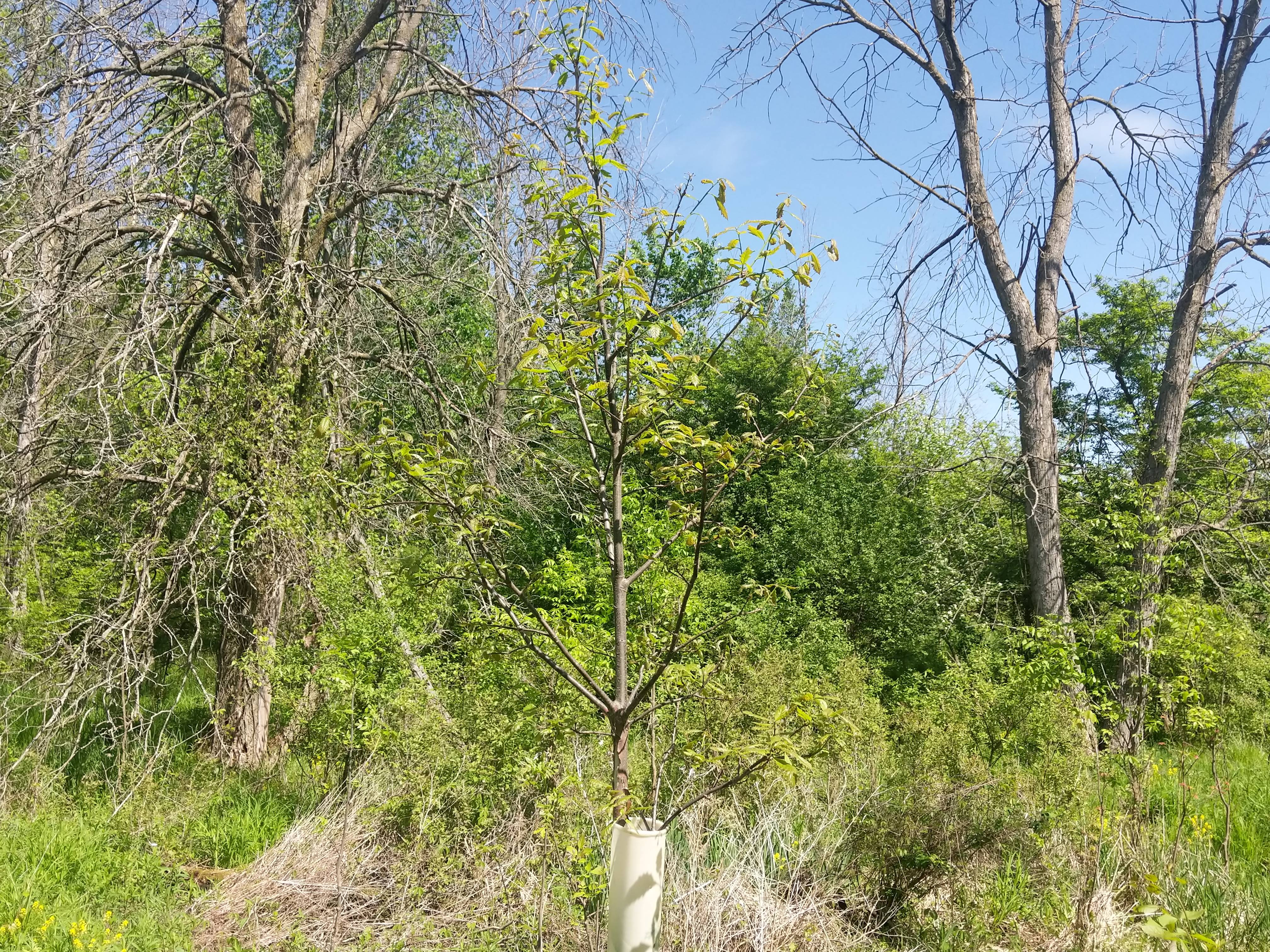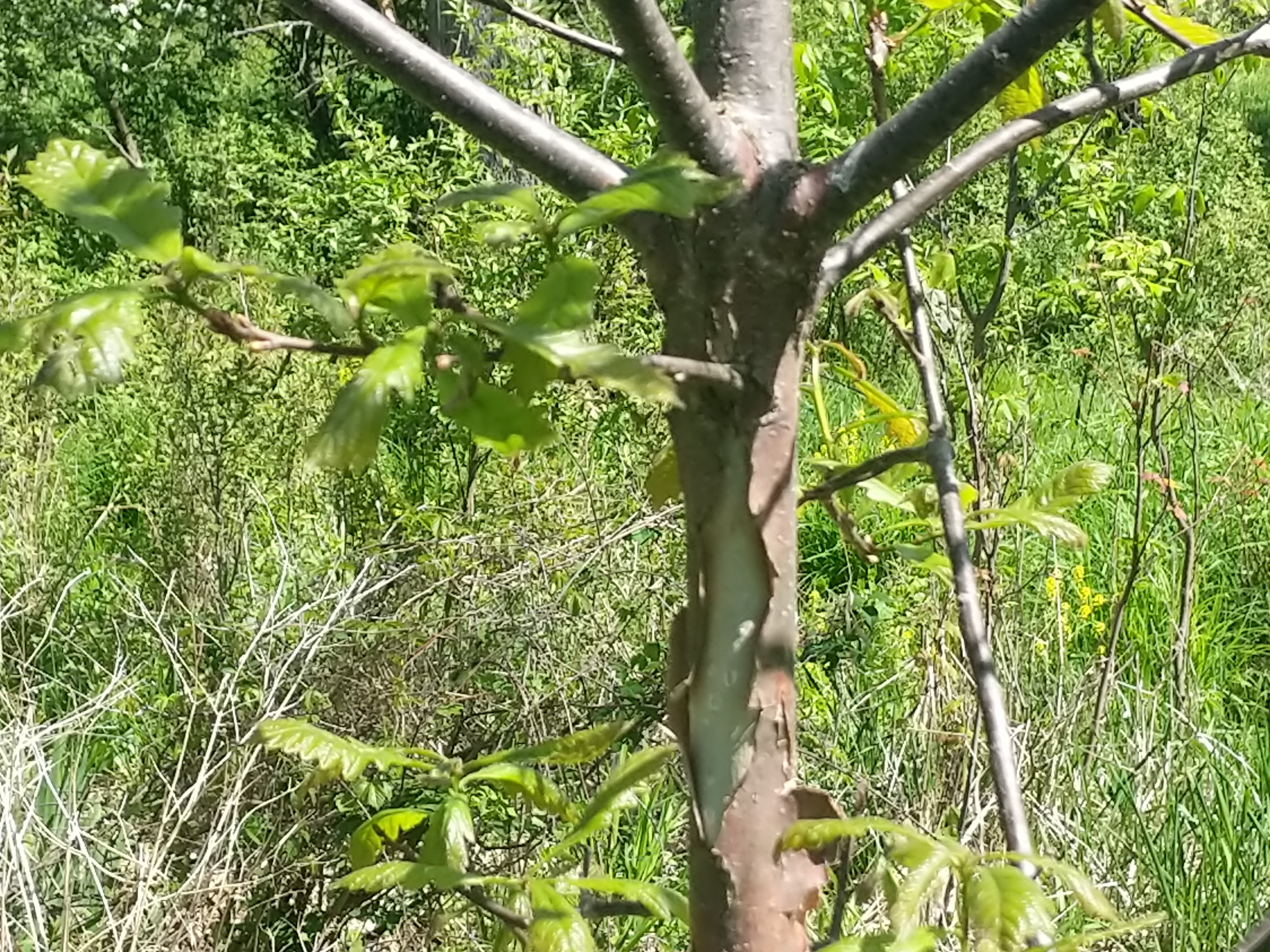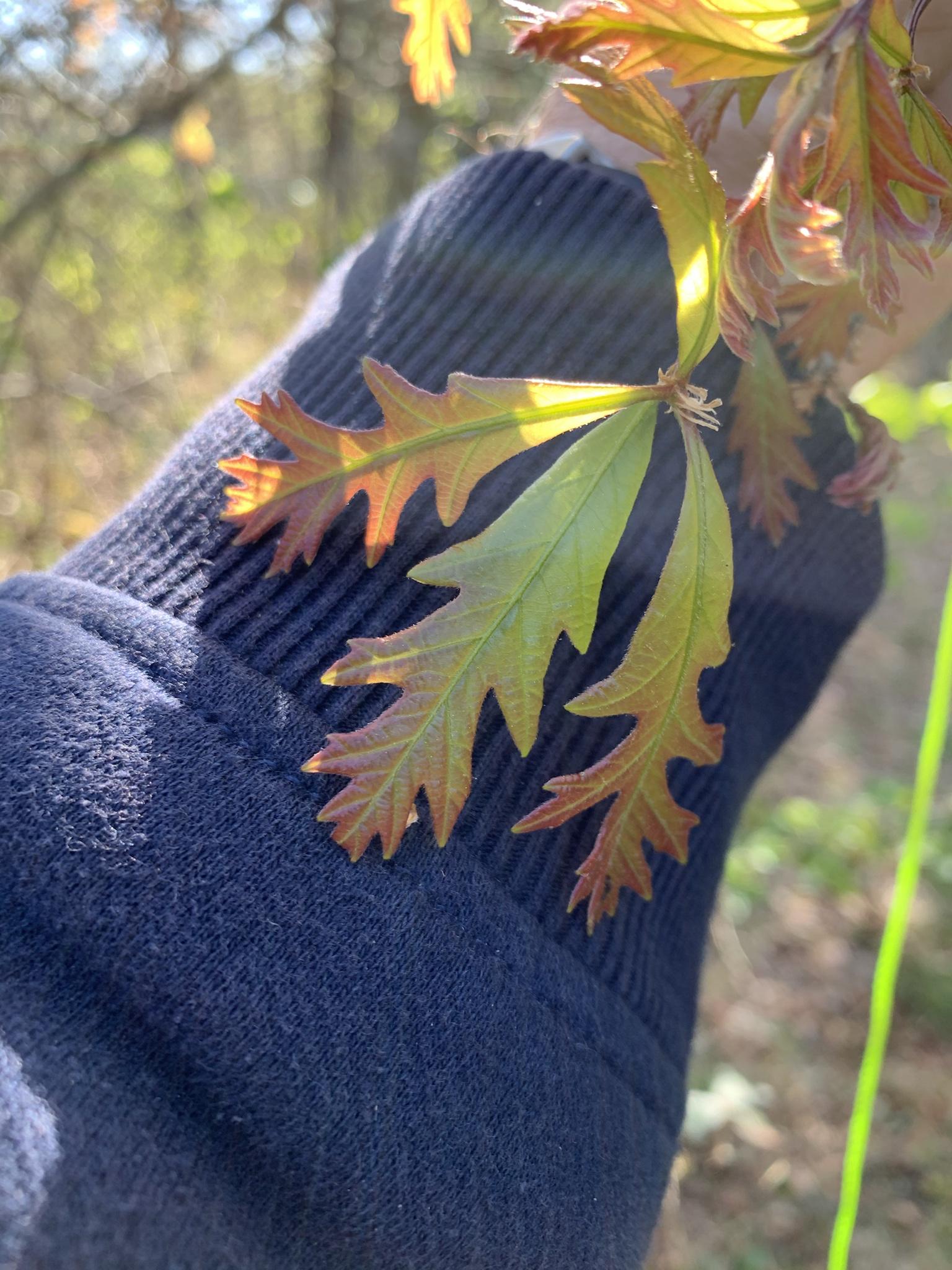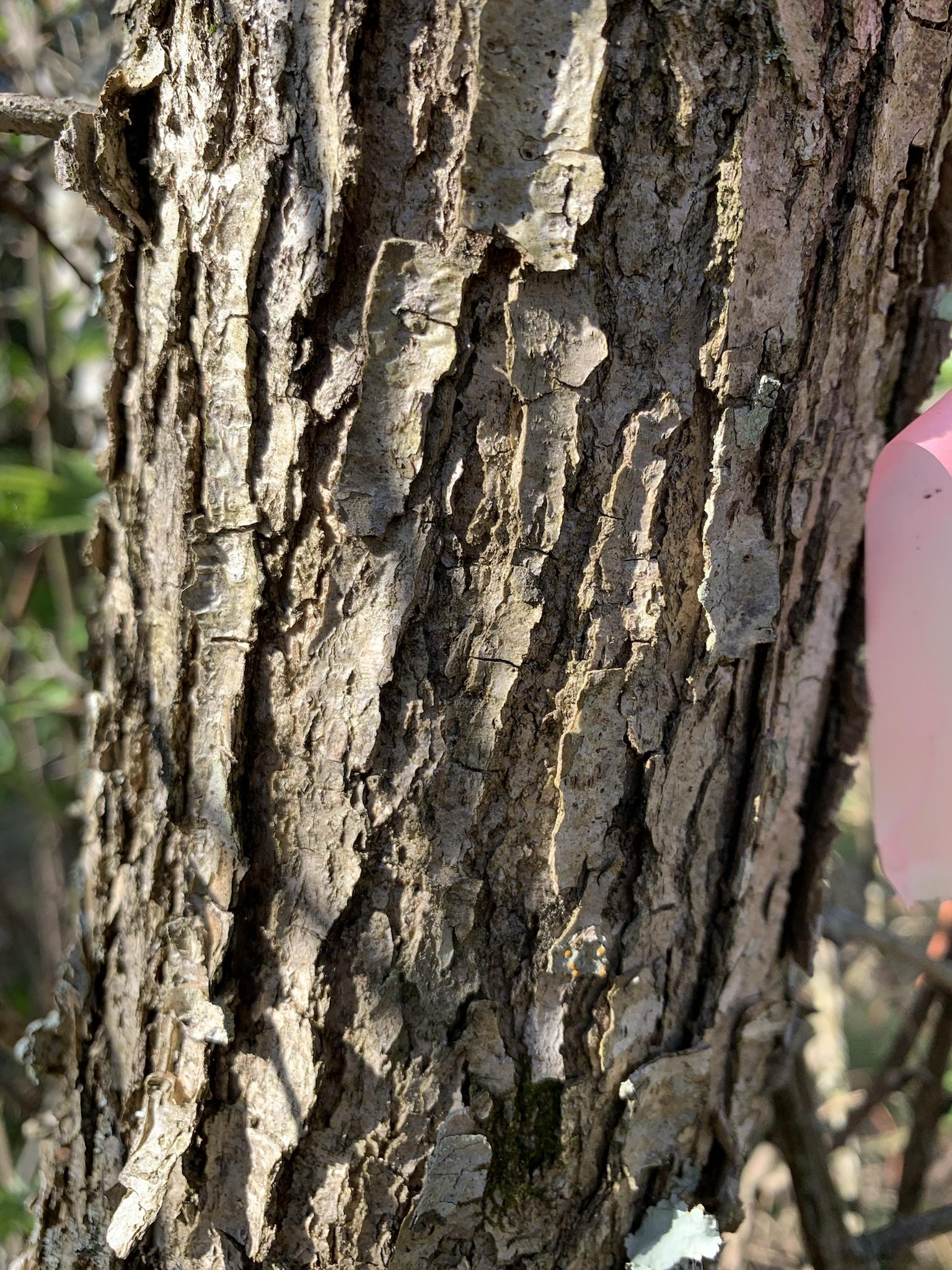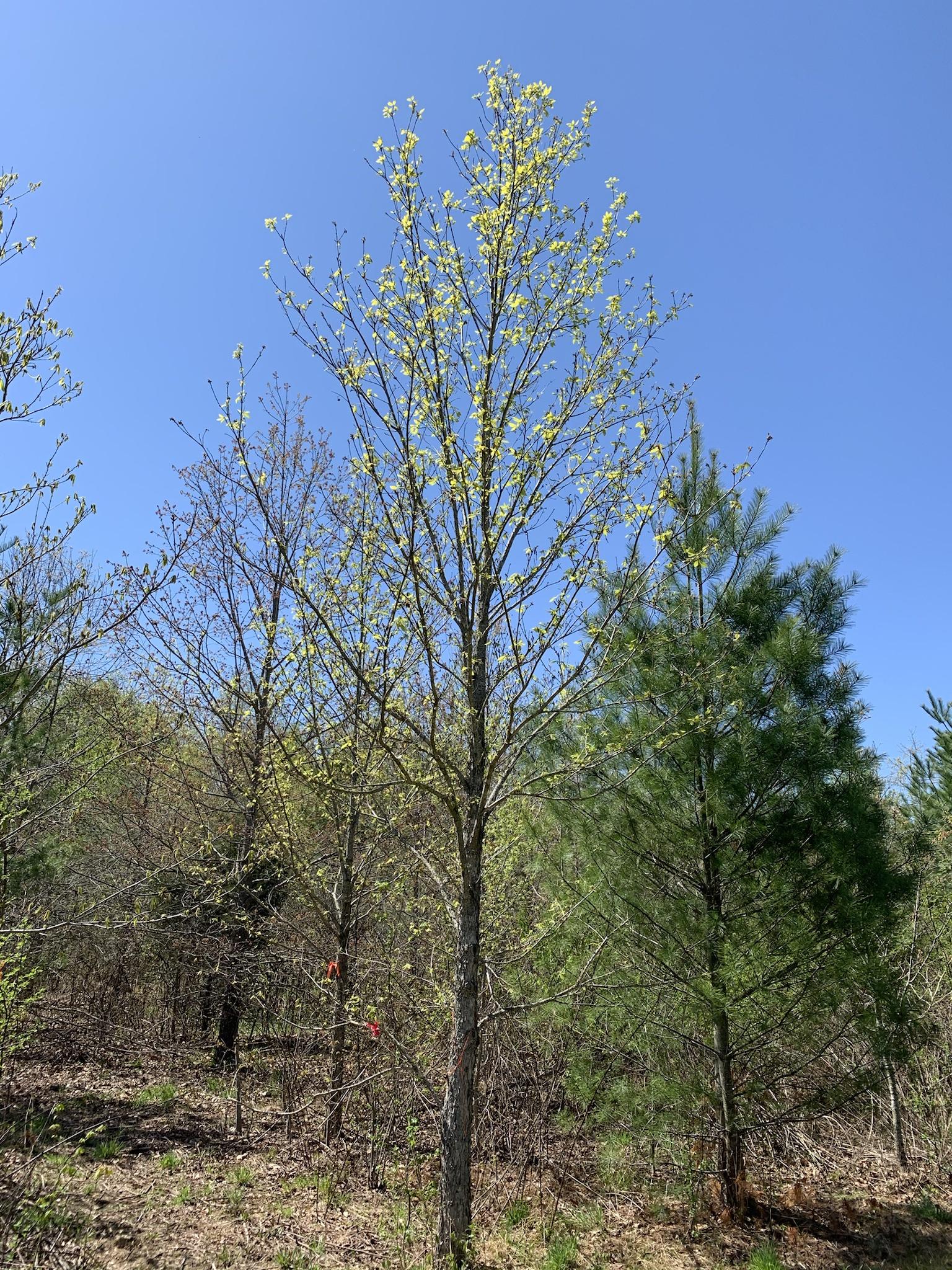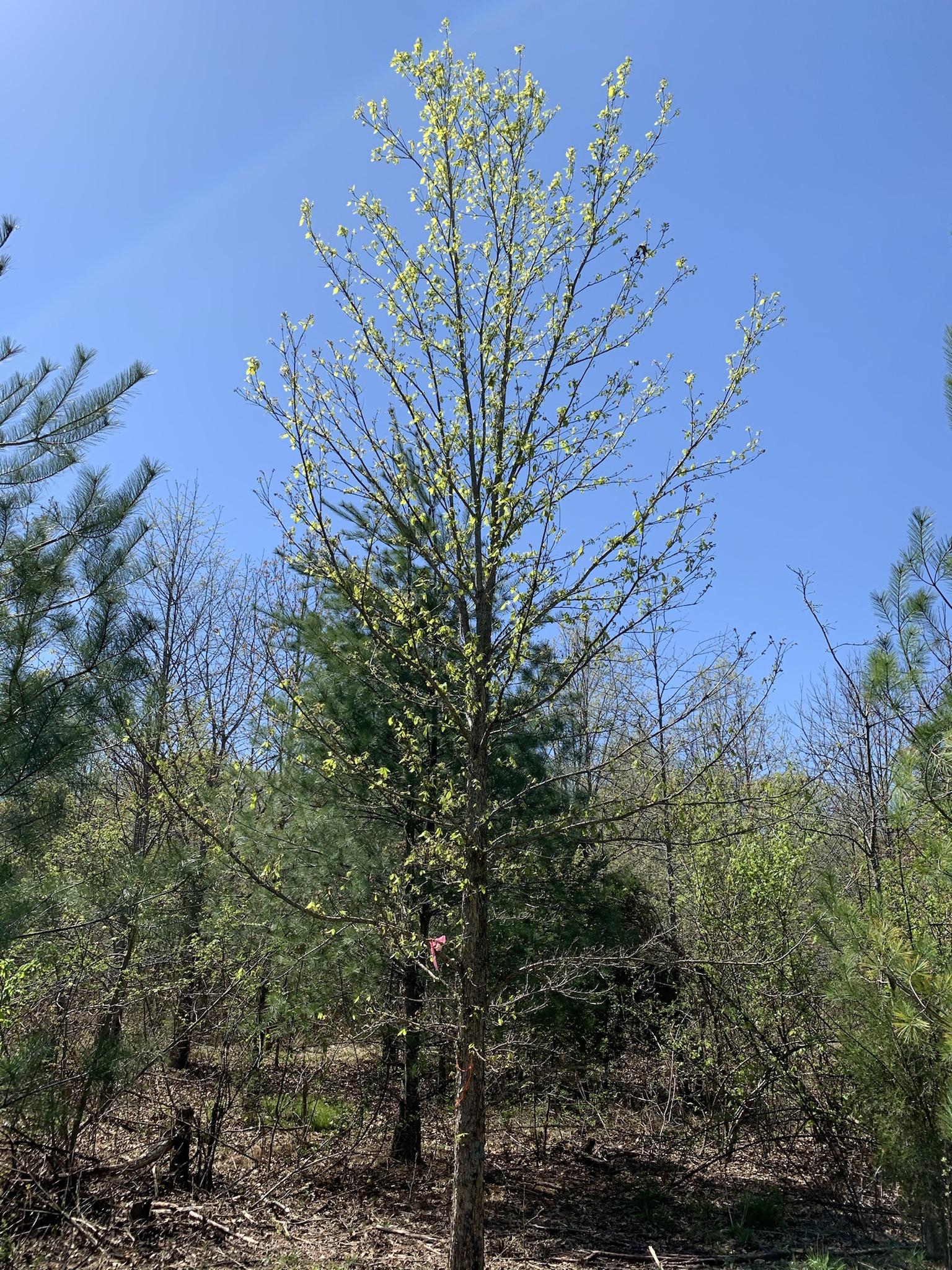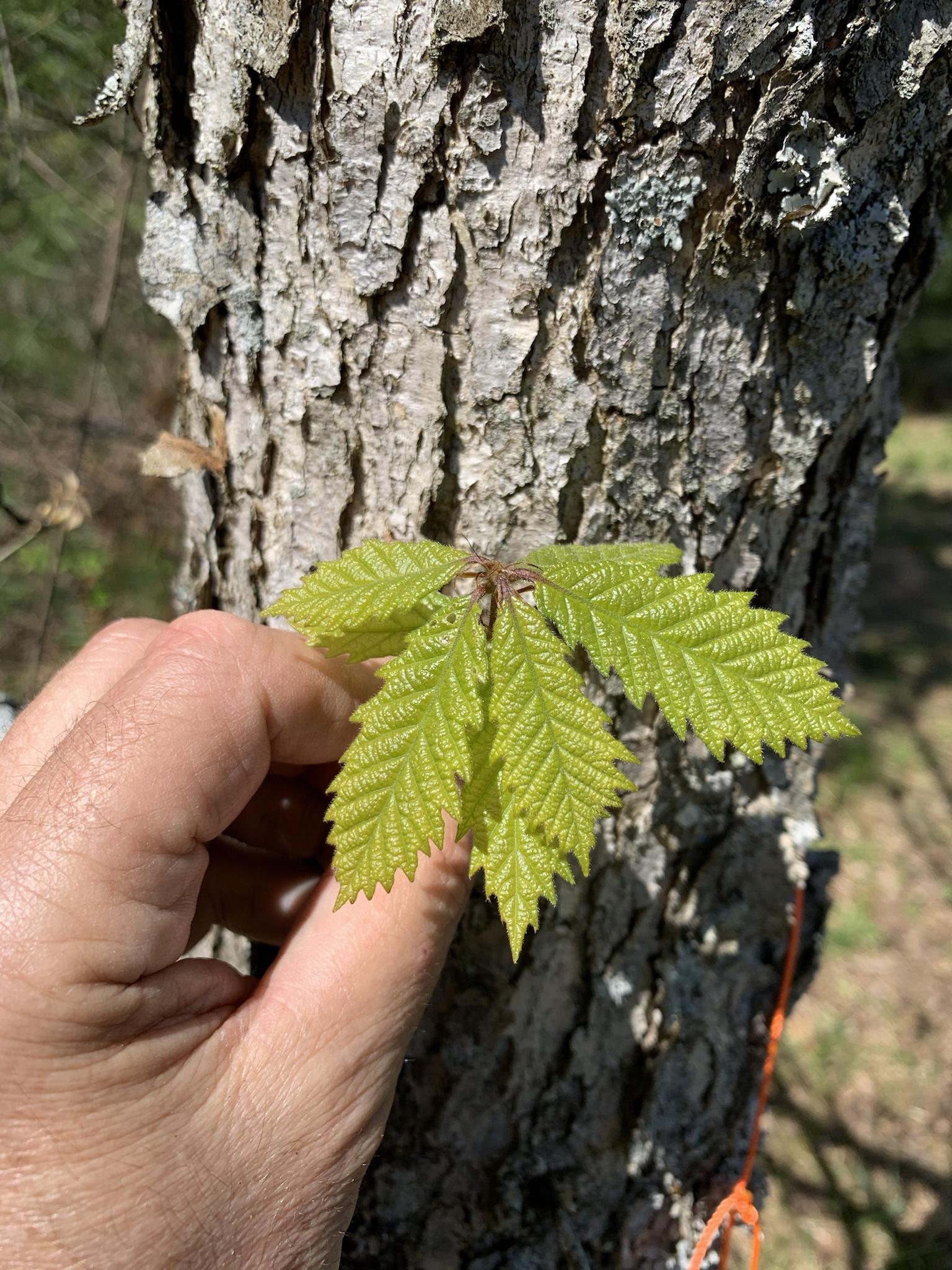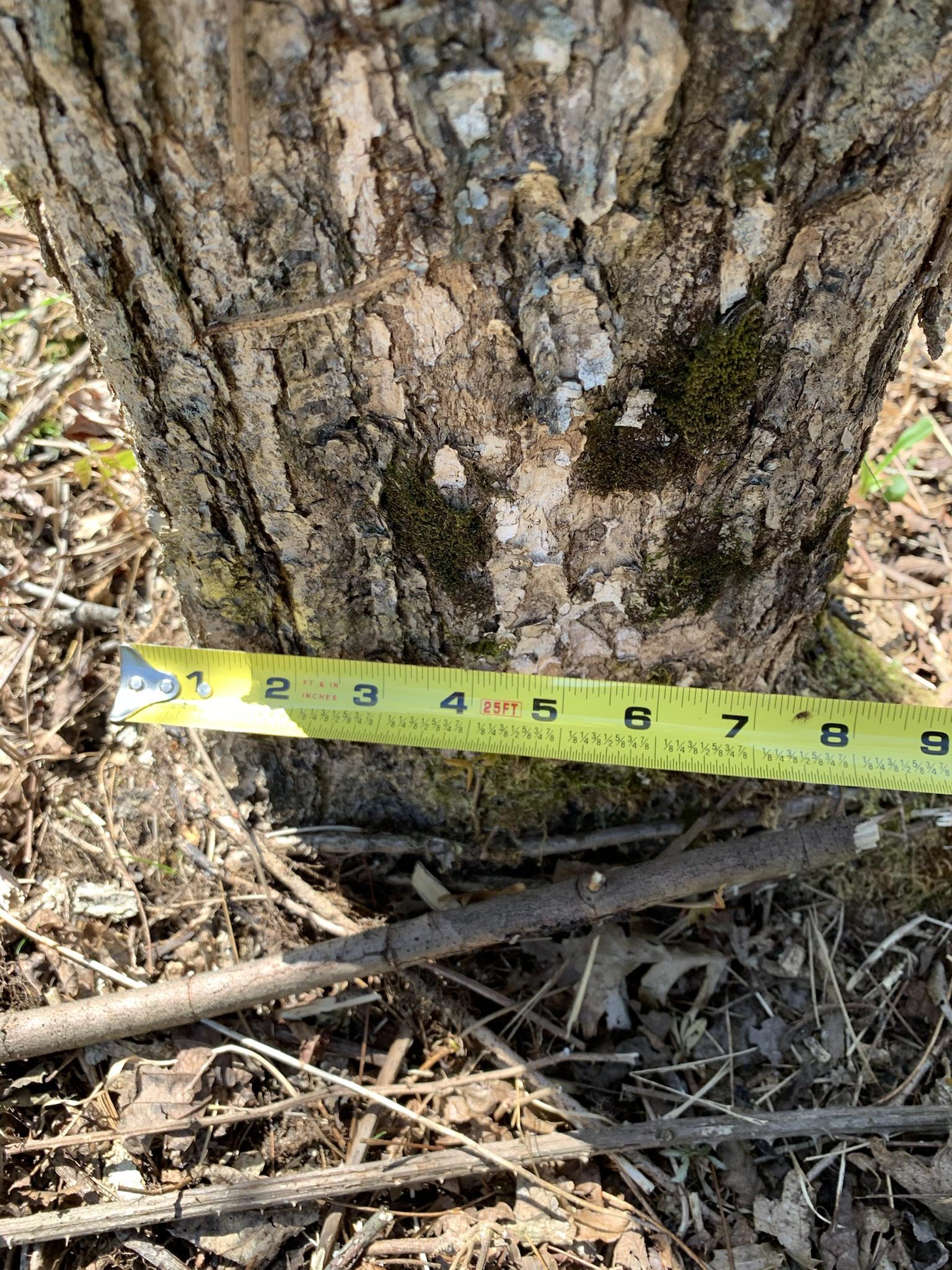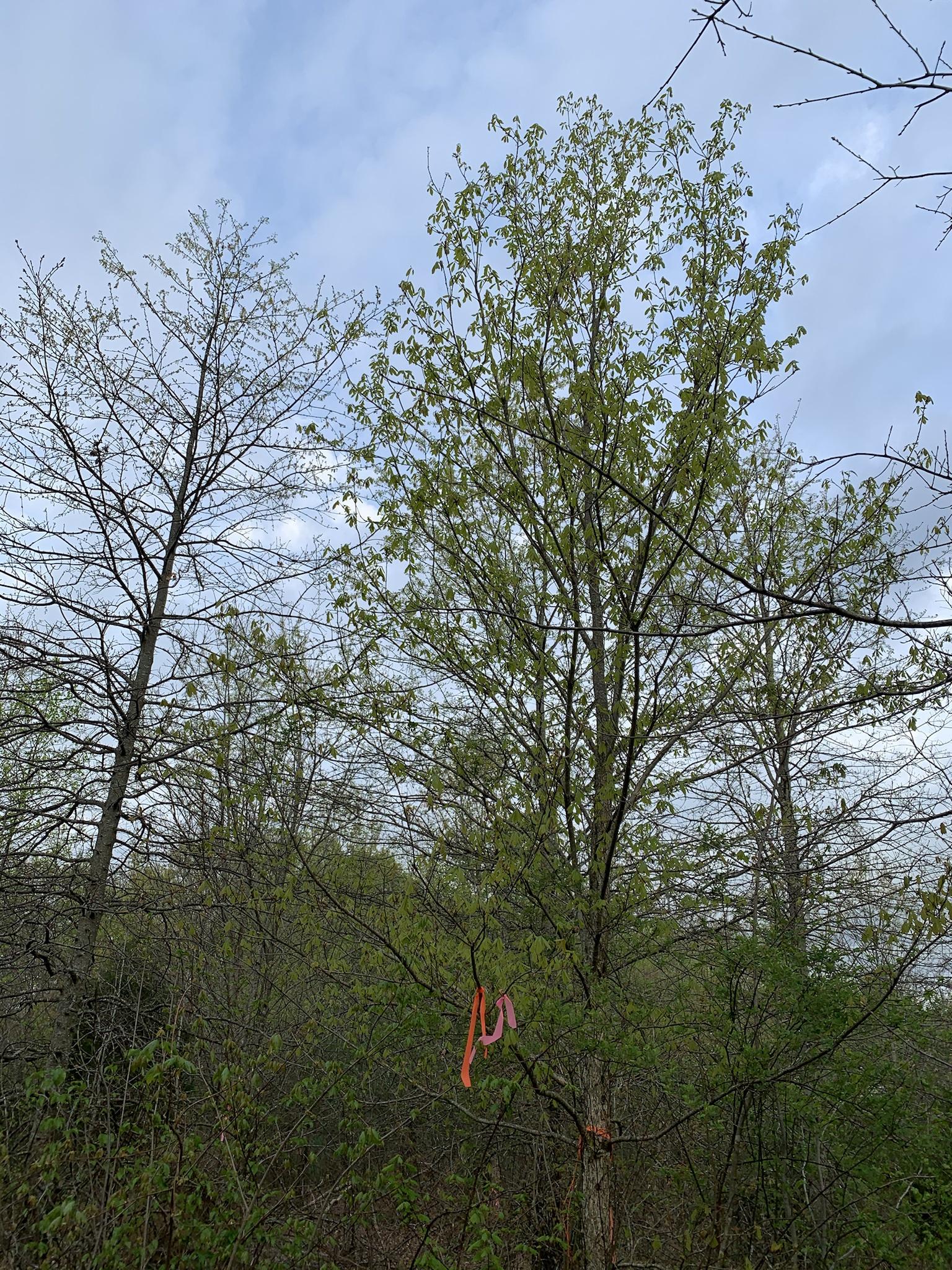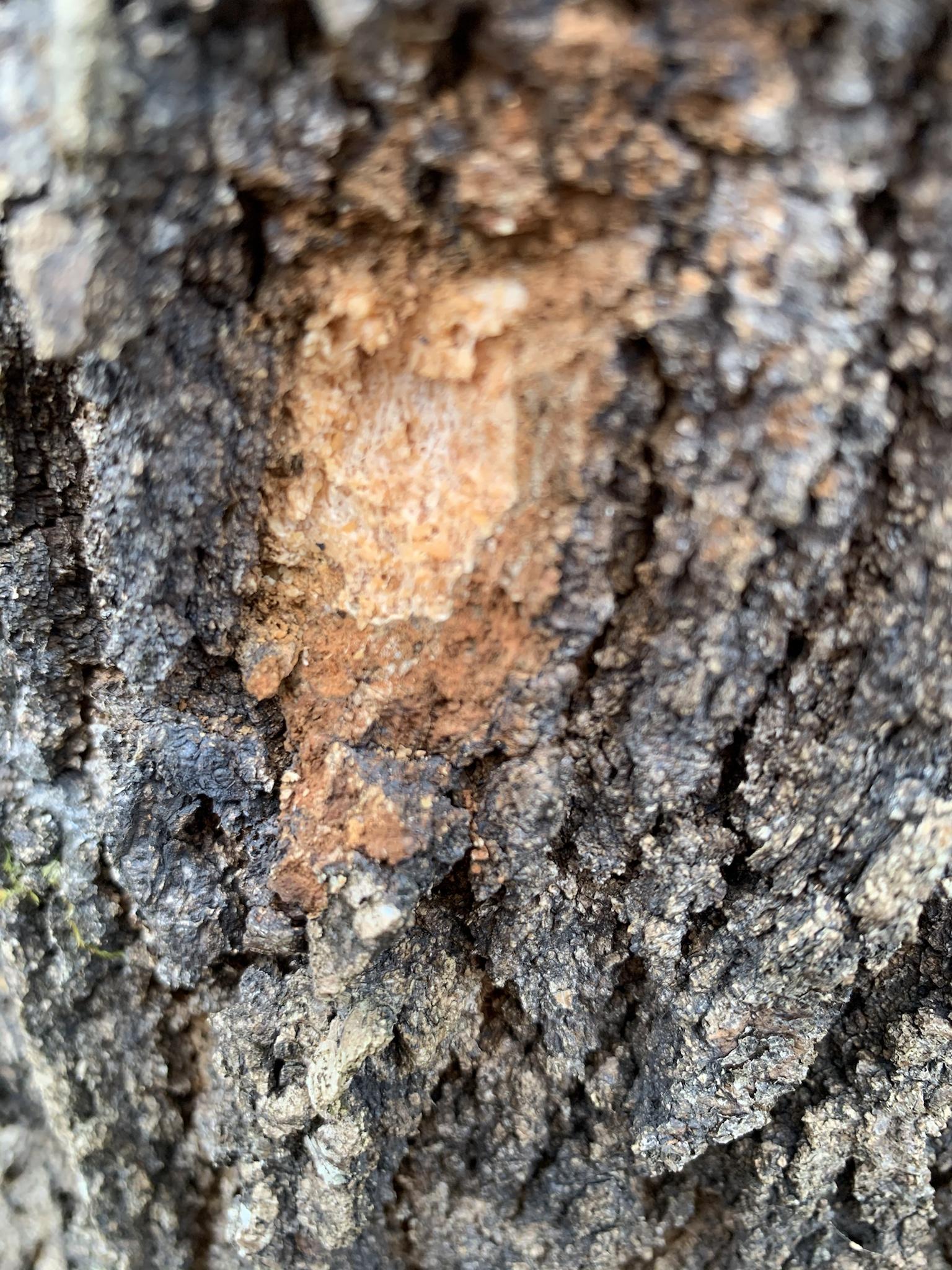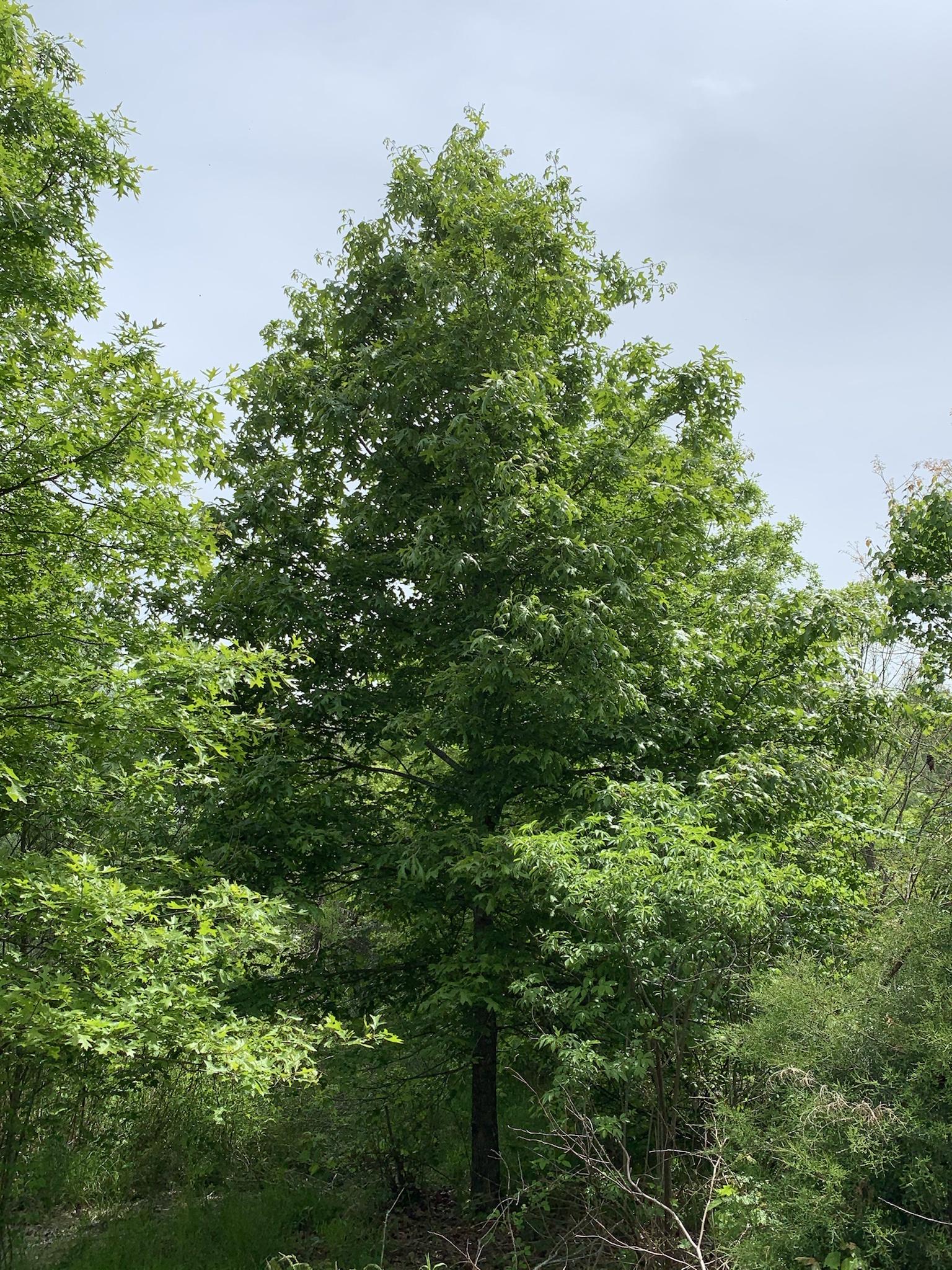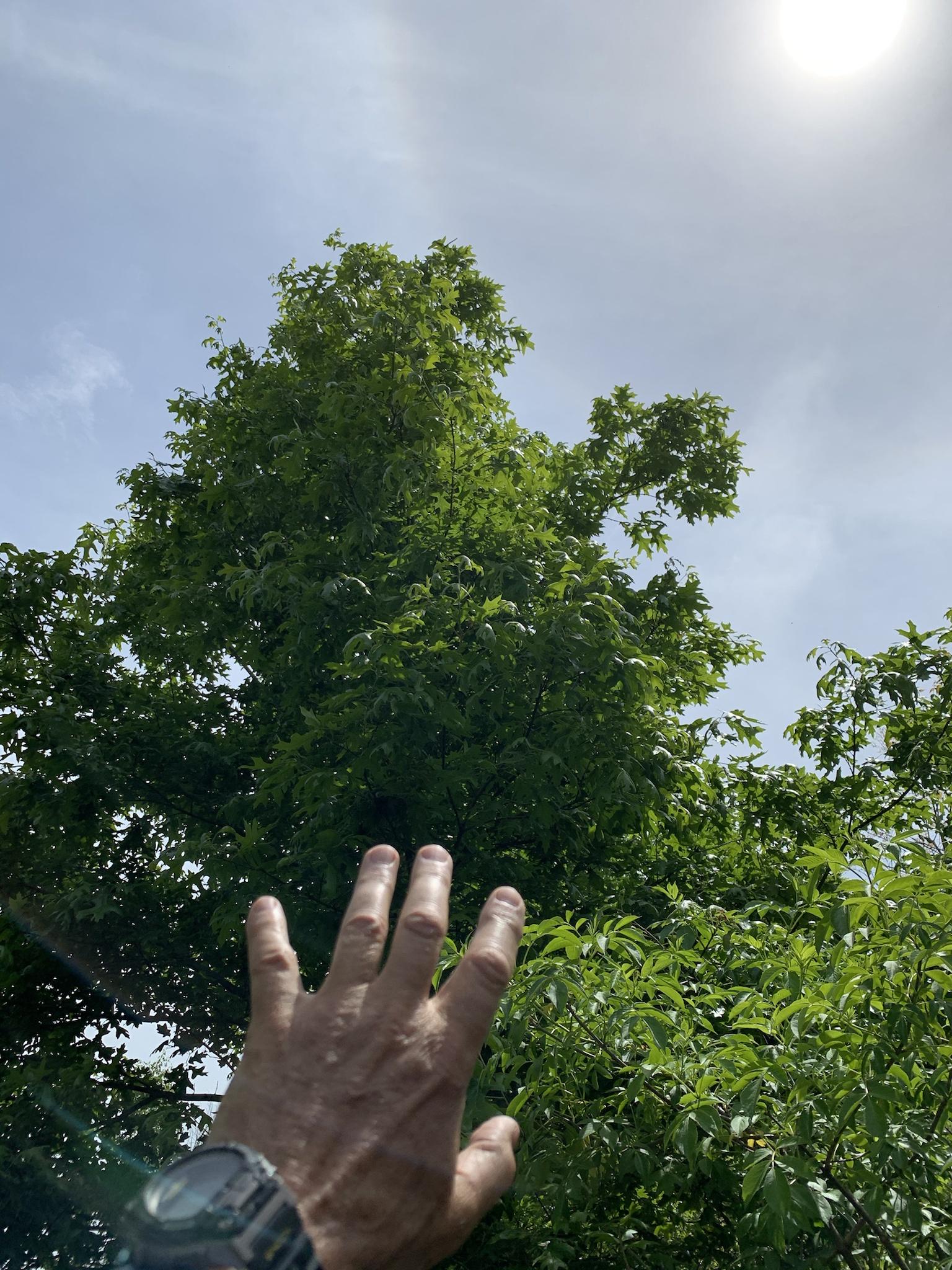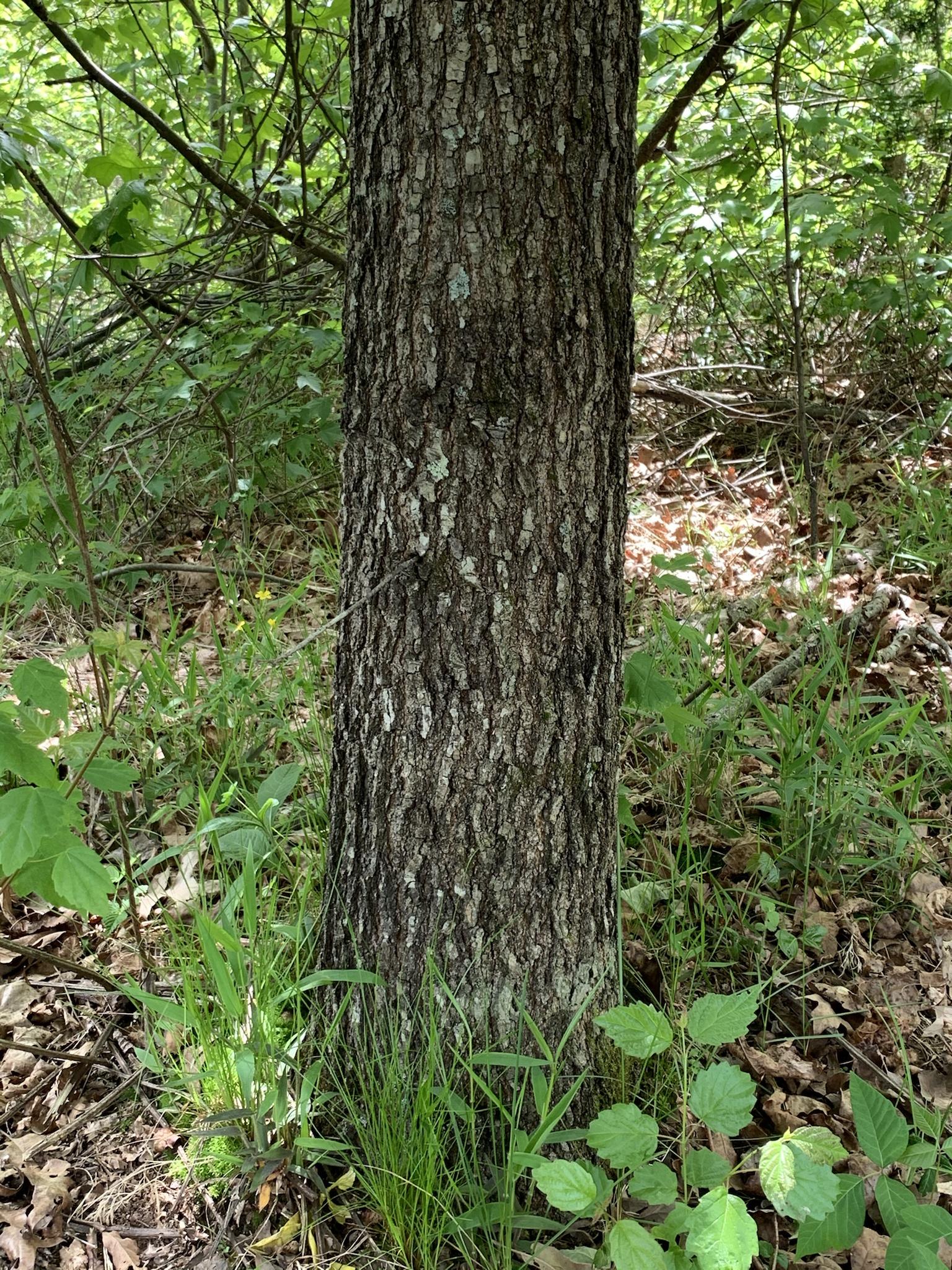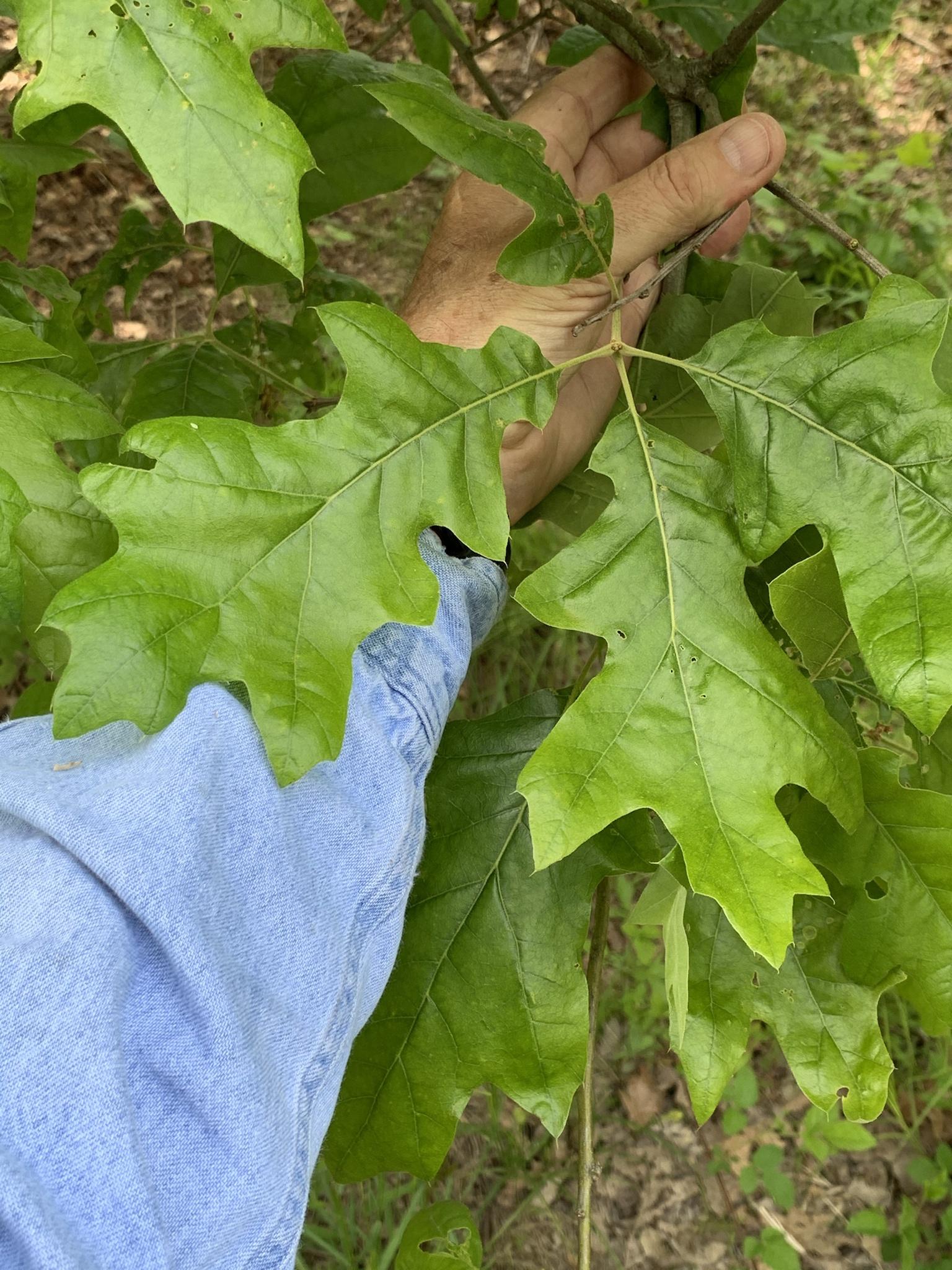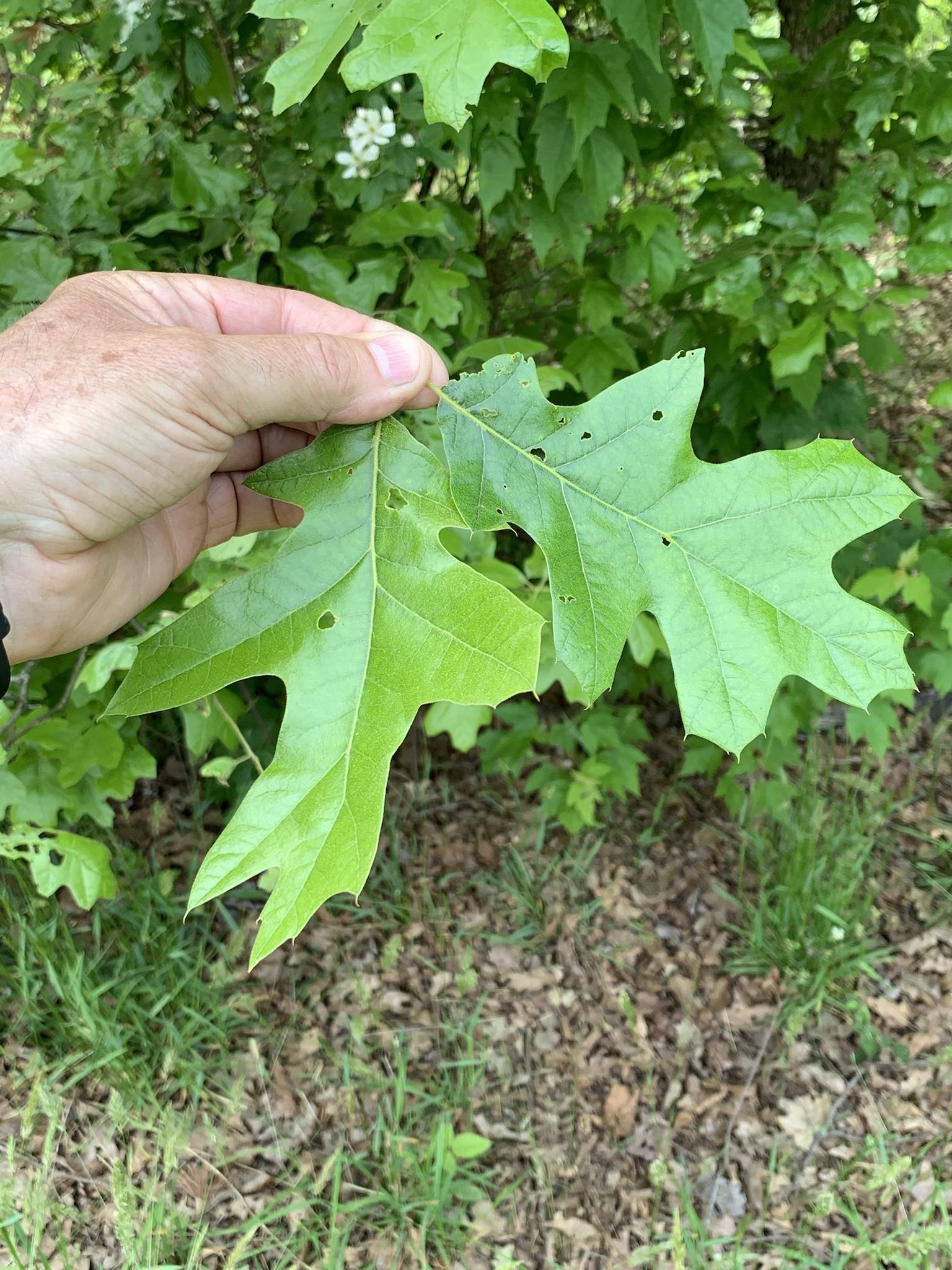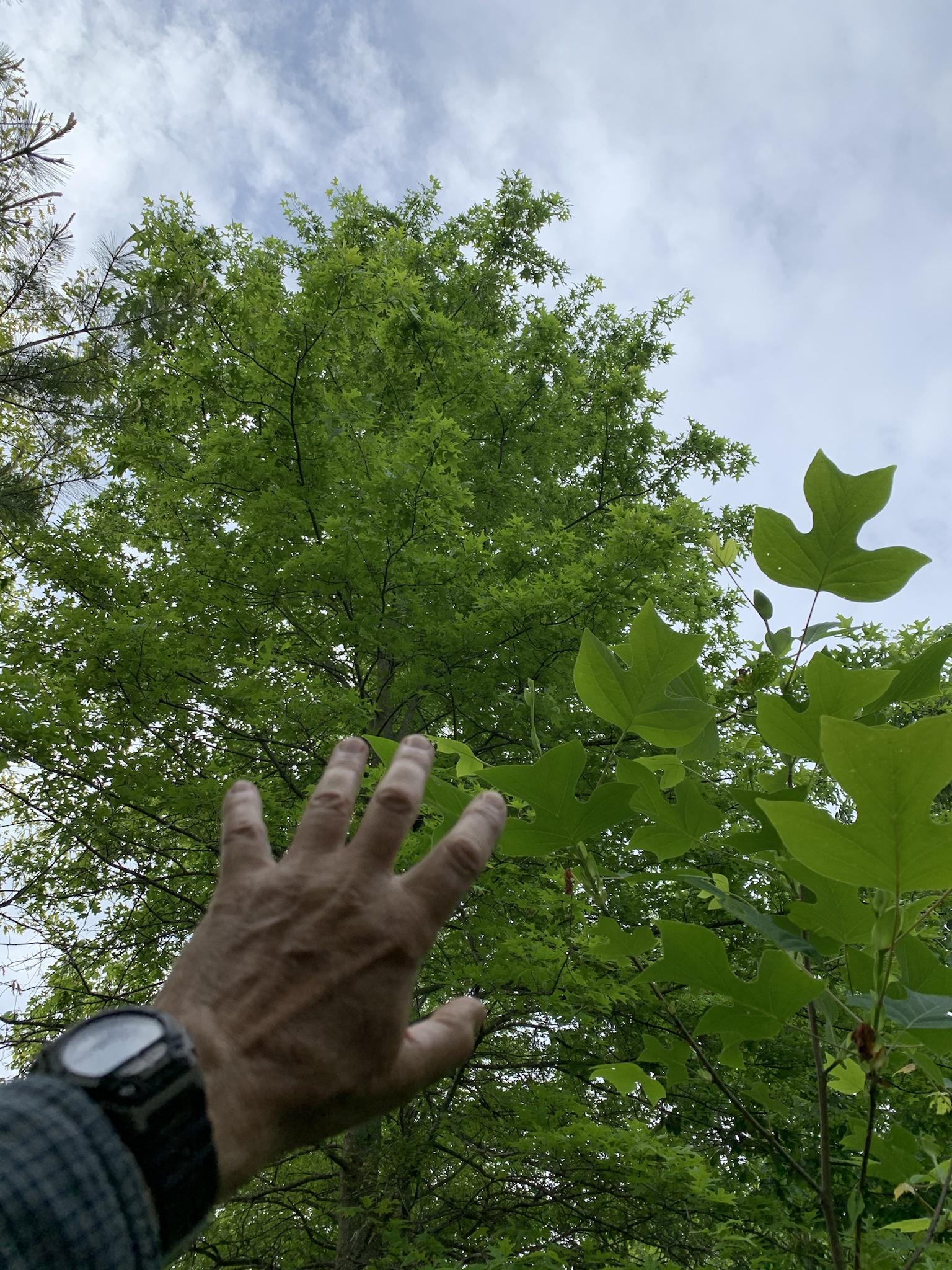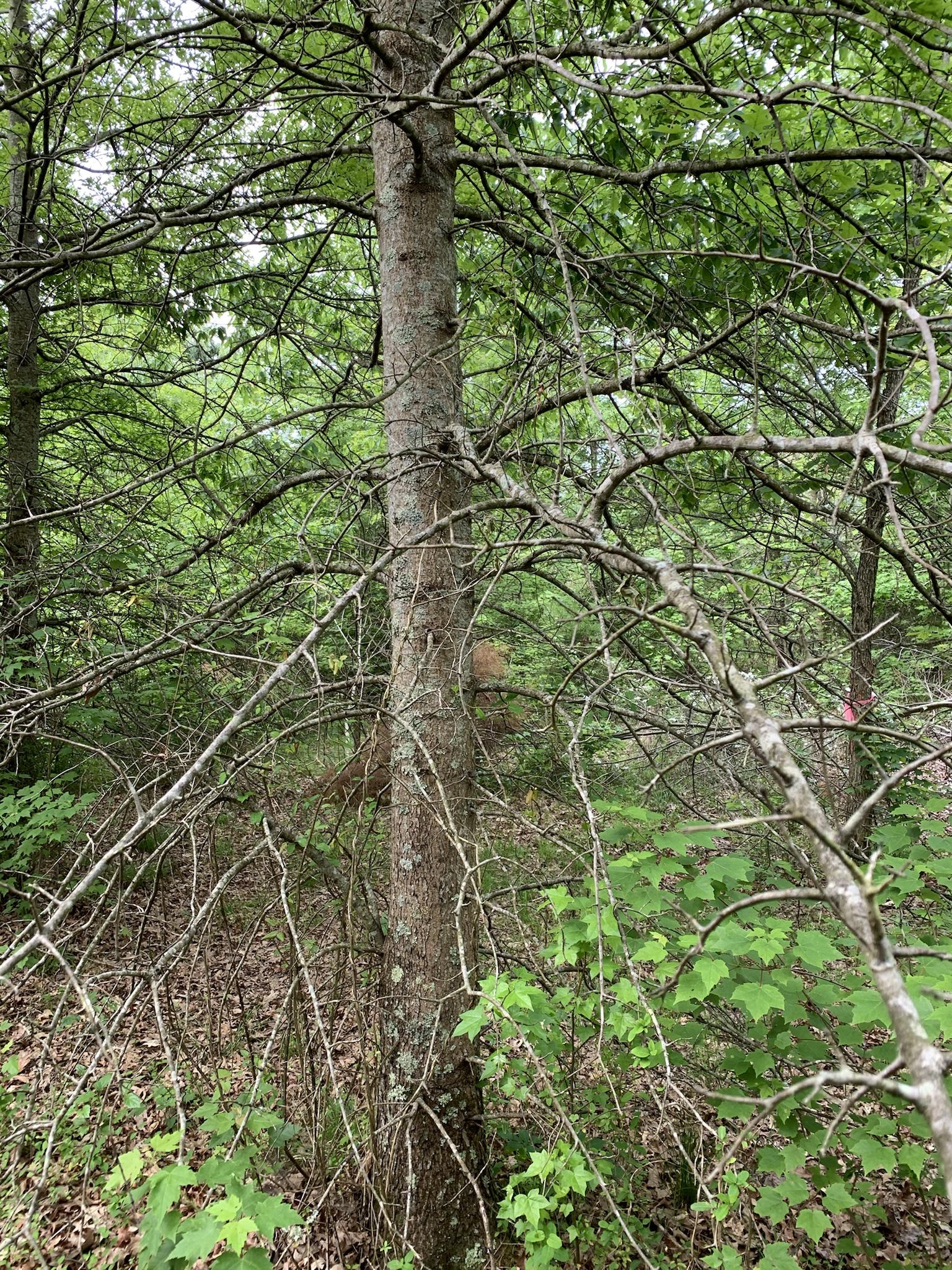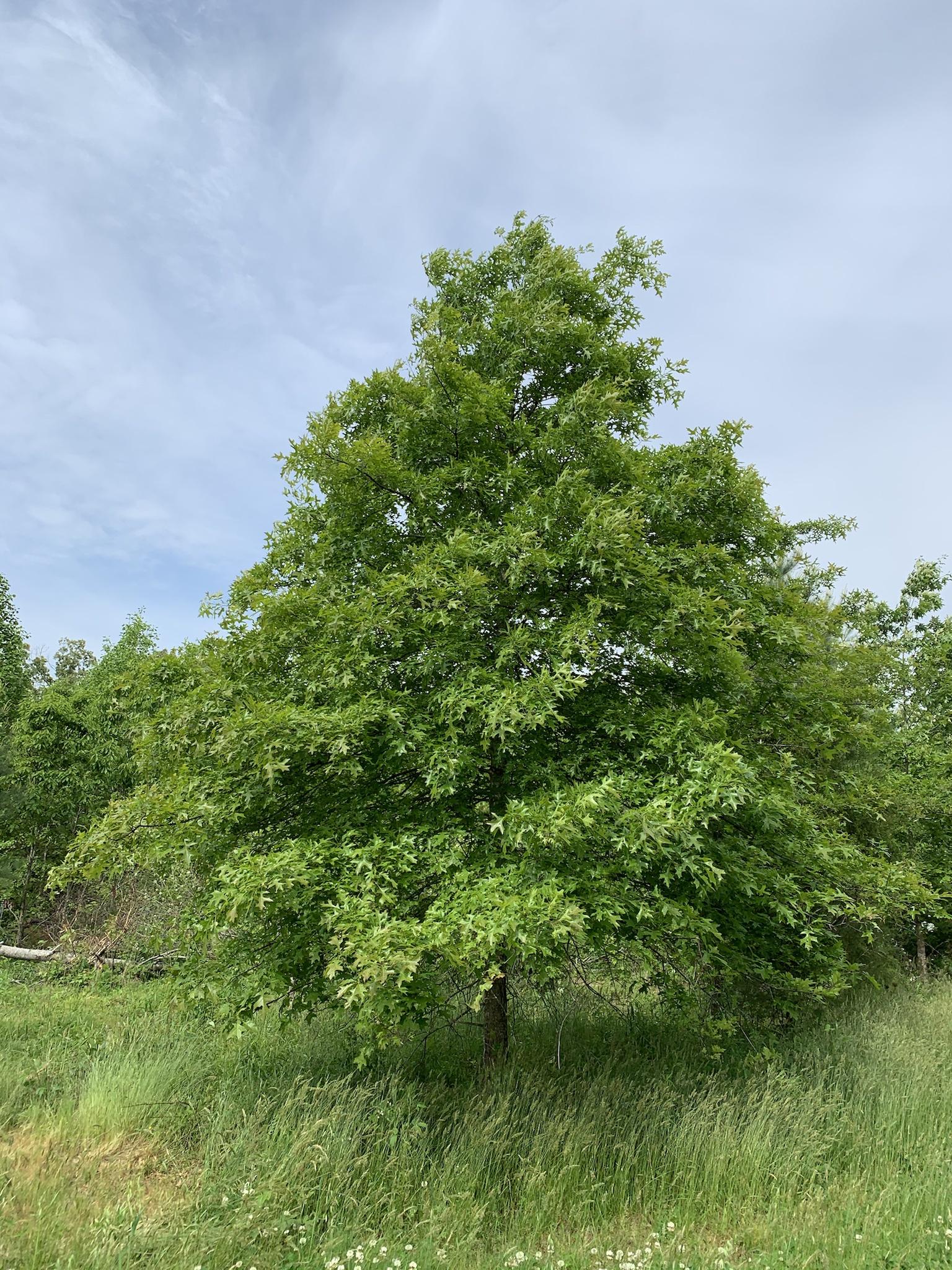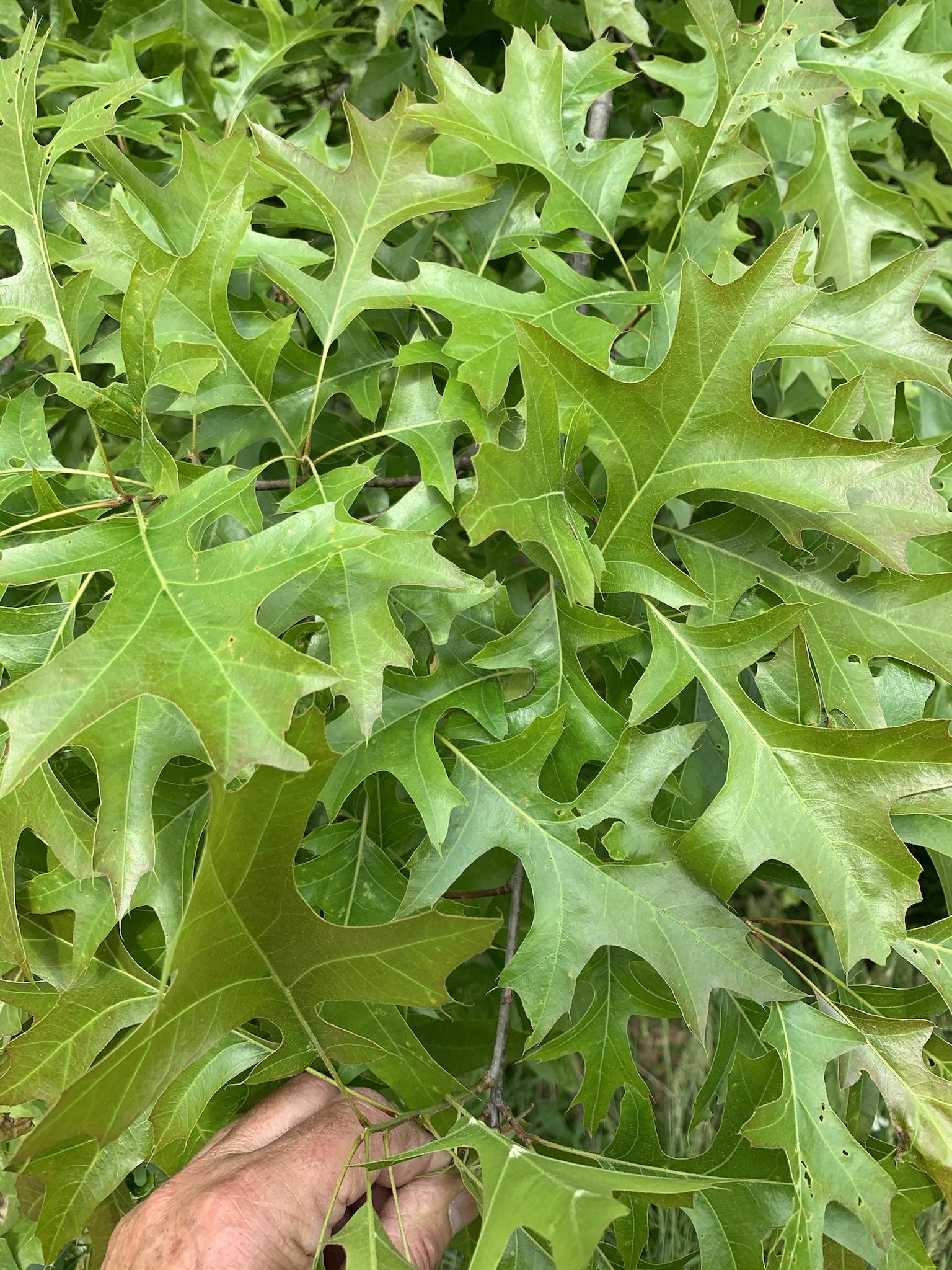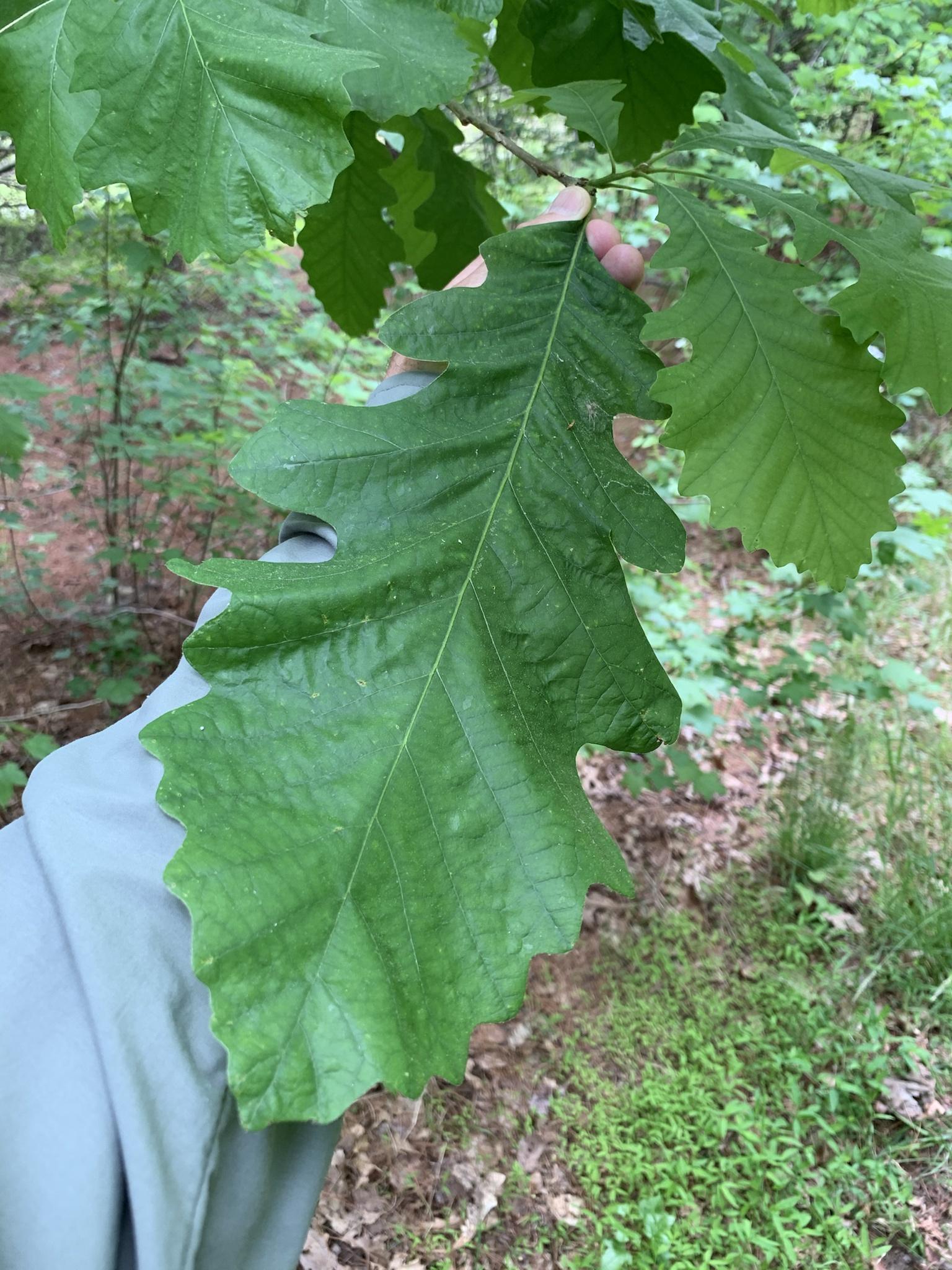Pin oak is/was a nurseryman's dream - Very easy to grow from readily available acorns, grows fairly rapidly, but is very amenable to transplanting as quite a sizeable tree as a B&B specimen, acorns are small enough that homeowners are less likely to complain about them than larger-fruited selections such as bur oak or northern red oak. Some have very respectable red fall color.
High pH soils are not generally an issue here, but in areas where soil pH is high, pin oak will struggle, and leaves may be chlorotic.
In my area, pin oak has been widely planted as a 'landscape' tree in residential, commercial, and urban streetside settings since at least the early 1970s... almost to the point of a 'monoculture' planting. I'd hazard a guess that 95+% of oaks planted in the urban/suburban landscape here in the last 50 years were pin oaks. Not really all that suitable. long-term, for small residential lots, for a variety of reasons... they rapidly get to be very large trees, its downsweeping lower limbs are 'eye-pokers', and if you limb them up, the next tier sweeps down to take their place, resulting in the need to lion's tail/lollipop them, such that they soon look 'out of scale' with many homes.
Near-monoculture planting as we've seen here, can be disastrous if/when diseases/pests arrive... gouty/horned stem/branch gall wasps and bacterial leaf scorch have delivered a one-two punch to 40+ yr old pin oaks in yards and up and down boulevards, resulting in them declining and dying over a 5-10 yr period, requiring removal. It's not at all unusual to see trees that look very much like the one in this photo:
View attachment 34953
Those galls essentially girdle twigs/branches, and will eventually result in the demise of the tree.
Kinda reminds me of a discussion I had recently with a friend who is a 2nd generation UofIL grad... when his mom was in school there, elms were the predominant street tree... Dutch Elm Disease eliminated them; they replaced them with White Ash, which were dominant when he was in school there 30 yrs ago. Now, Emerald Ash Borer is either taking them out or requiring continued insecticide treatment to keep those Ash trees alive. Perhaps they'll opt not to replace them with pin oaks.
There are several big, old pin oaks in my mixed hardwood forest. Most are free of stem/branch galls, but there is one tree, down on the creekbank that is infected... but as there's a very diverse population of trees in woods here, I'm not overly concerned about significant impact from them.

